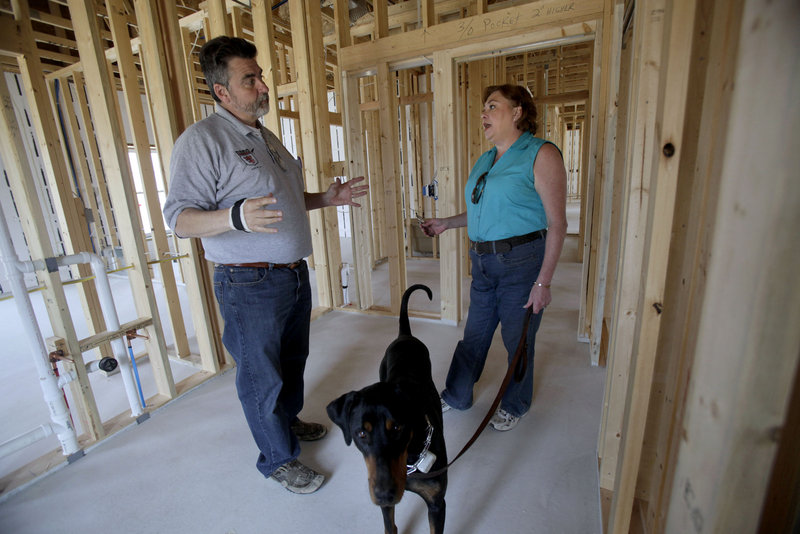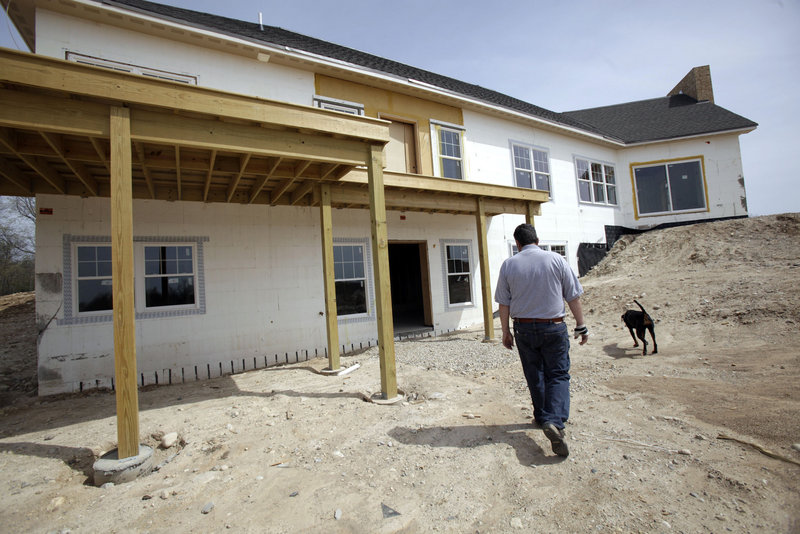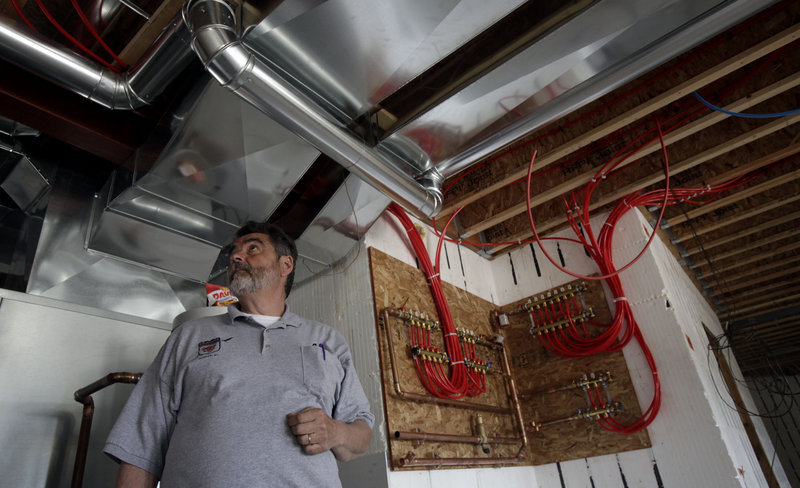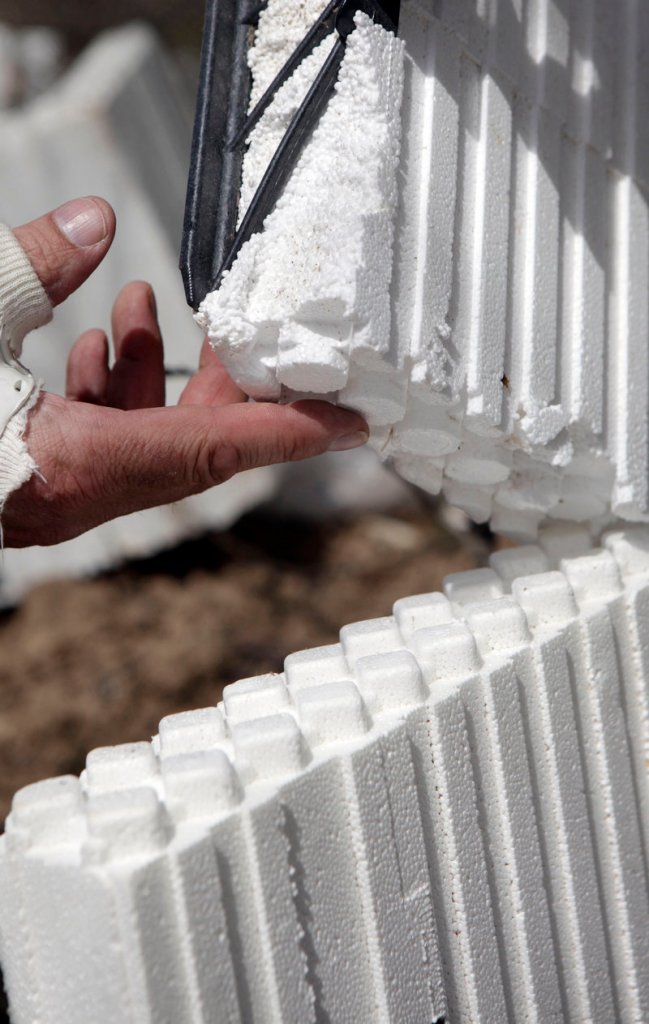MILWAUKEE – Well-qualified borrowers with sterling credit, Eva and Daryl Lehman didn’t expect to have a problem getting a mortgage when they set out to build their dream home in Wisconsin’s Sheboygan County.
They soon found that landing the mortgage for the green-built home was akin to running headlong into a 12-inch thick insulated concrete wall.
“On my best day, I couldn’t make this up,” Eva Lehman says of the mortgage process. “I’m not that creative.”
The Lehmans are among those being squeezed by a mortgage market that for certain types of new residential construction — including environmentally friendly construction — has become difficult to navigate.
A variety of factors is contributing to the situation: government regulation, cutting-edge “green” construction technology, risk-averse lenders, and a dearth of comparable home sales on which to base an appraisal.
And it’s not just environmentally friendly building at issue. Real estate appraisers say the housing market remains stubbornly weak. And finding comparable sales data on which to base appraisals is a challenge.
“We have the worst residential real estate market here in over 20 years,” said Richard Larkin, owner of Larkin Appraisals in Elm Grove, Wis. “I was active in the early ’80s, and this is quite possibly worse.”
In the fall of 1981, single-family home mortgage interest rates were 19 percent, he said. “There was almost no lending going on. It effectively shut down the market,” he said. “Now we have an economy that has effectively shut down the market.”
Green construction is not immune from the housing downturn.
Green, or sustainable, building is the practice of creating and using healthier and more resource-efficient models of construction.
“The decline has been very bad for green building,” Larkin said.
The problem is often a lack of comparable sales numbers, a necessary and scrutinized portion of real estate appraisals that are done every time a mortgage is granted.
If there are few comparable sales, Fannie Mae and Freddie Mac — the biggest U.S. buyers of home mortgages — won’t buy the mortgages from lenders for resale to investors. The companies make up what’s known as the secondary mortgage market.
“You’ve got to have comparables, particularly if you’re a bank that’s maybe going to sell the loan to Freddie or Fannie,” said Kurt Bauer, president and CEO of the Wisconsin Bankers Association. “They’re not going to buy the loans unless you can justify the price, and how you do that is by comparable sales.”
That’s become difficult.
“It’s very tough to do a new construction appraisal right now, whether it’s green or not,” Larkin said. “There’s just such a lack of data because the activity is so low.”
Never mind something that is green-built, such as the insulated concrete form house built for the Lehmans.
“We’re even running into problems on traditional homes, where the underwriting standards have become so strict. What may have been a qualified buyer a couple years ago is having problems getting a loan,” said Donald Chudnow, co-owner of Chudnow Druck Valuation Inc., a residential real estate appraisal service in Glendale, Wis., and a 33-year veteran appraiser.
“Almost any unusual property, where it’s difficult to find comparables, the secondary market doesn’t even want to see it,” he said. “It’s been a real problem, at least in appraisal circles.”
So, while the federal government dangles lucrative tax credits to encourage green housing construction, its efforts to regulate a lax home-lending market can make it tougher to get a mortgage for such a house.
“Welcome to our world in banking, when you have one arm of the government telling you one thing and another arm of government telling you something else,” Bauer said.
“This is all the result of the abuses that occurred in the last decade,” Bauer added. “These are some of the reforms. Unfortunately, when you try to use a broad net to reform, you end up hurting good people.”
Folks like the Lehmans end up stuck in the middle.
The Lehmans are having an insulated concrete form home built, complete with a geothermal heating and cooling system. With excellent credit scores and a 20 percent down payment ready to go, they contacted four lenders before they found one — Associated Bank — willing to make the mortgage loan. To get the loan, though, they had to boost their down payment by 10 percent.
Their mortgage loan officer, Dave Gehringer, said the Lehmans are great candidates for a loan. “They are the quintessential borrowers,” he said. “We looked at what they wanted to do and it made sense.”
Then came the appraisal.
“The whole environment is difficult because of getting comparables,” he said.
“Everyone’s in a defensive mode right now,” Gehringer said. “Appraisers are in defensive mode. Underwriters are in defensive mode. I think what is exacerbating this is the guidelines that are imposed on lending institutions.”
Once they secured the funding, the Lehmans went forward with their project, which is being built by Excalibur Builders in Slinger, Wis., a company that builds insulated concrete form homes.
The house has walls made of 8-inch thick reinforced concrete surrounded by 2.65 inches of polystyrene on each side. The walls have zero air infiltration and have an insulation rating that’s almost four times what the U.S. Department of Energy recommends for concrete/masonry walls.
The house’s geothermal heating and cooling system uses the constant temperature of the earth 8 feet beneath the surface — below the frost line in Wisconsin — to control the home’s temperature.
Every possible air infiltration spot is filled with spray foam insulation.
With the insulation and geothermal system, “You’re burning a minimum of 50 percent less” fossil fuels to heat and cool the house, said Dave Hamilton, owner of Excalibur.
The process of obtaining a loan for the Lehmans’ house has been frustrating, to say the least.
“Three years ago, they were making loans to people who were not qualified for a loan to buy a pack of gum,” Eva Lehman said.
“Now that people who shouldn’t have been getting the credit screwed up, the people who should be getting the credit today are the ones being penalized. That, to me, is the most frustrating.”
As green building methods continue to gain in popularity, appraisers say that they are working to keep pace with the trend.
The Appraisal Institute, a Chicago-based professional association, has designed a certification program that helps appraisers value green building.
Larkin and Chudnow have recently completed seminars on green residential construction.
Michael T. Crowley Jr., CEO of Bank Mutual, said he believes green building will only grow in popularity and the home lending industry must adapt to the changes.
“It’s one of those things, I think, where we’ll all have to work together and try to go toward a common purpose,” he said.
In the meantime, if you are seeking a loan for a new green-built house, Eva Lehman has some advice: “Be prepared for a battle.”
Send questions/comments to the editors.






Success. Please wait for the page to reload. If the page does not reload within 5 seconds, please refresh the page.
Enter your email and password to access comments.
Hi, to comment on stories you must . This profile is in addition to your subscription and website login.
Already have a commenting profile? .
Invalid username/password.
Please check your email to confirm and complete your registration.
Only subscribers are eligible to post comments. Please subscribe or login first for digital access. Here’s why.
Use the form below to reset your password. When you've submitted your account email, we will send an email with a reset code.